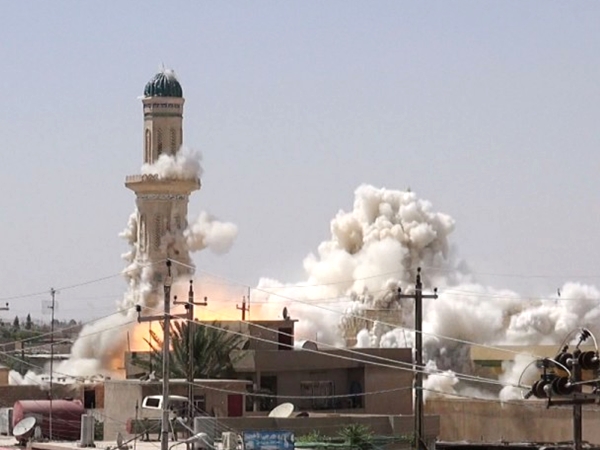
Photo: Via Twitter.
A resident of Tabqa city waves an Islamist flag in celebration after ISIS took over the nearby base in Syria. Photo via: Buzzfeed
Various media sources claim that Islamic State (IS, also known as ISIS and ISIL) has destroyed the tomb of Saddam Hussein’s father in Tikrit, Iraq.
Improvised explosives were allegedly placed inside and around the grave of Hussein al-Majid on November 8, destroying the mausoleum. According to a report by Shafaaq a local journalist said that “the terrorists blew up the tomb of Saddam’s father, which is located in the centre of a mosque in Tikrit city.”
However it has been difficult to independently verify the claims. Journalist Aris Roussinos explained that “It’s essentially impossible to go to IS areas because they capture and murder journalists.”
Conflicting images being circulated by local news sources are similarly difficult to authenticate. Each side involved in the complex sectarian conflict has been spreading misinformation and propaganda in an effort to galvanize popular support for their respective cause.
If true, the destruction is said to indicate an important shift in ISIS’s strategy. Former members of the Ba’ath party make up a key part of the organization’s strategic military leadership. The destruction of such a significant and historic Ba’athist site could signal that ISIS leaders have concluded that they are prepared to sacrifice the Ba’athist’s military expertise for the advancement of their ideological propaganda.
Regardless of ISIS’s motivations, the misappropriation and destruction of culture is a key part of the organizations strategy for funding and for garnering public support (see”UNESCO Confirms ISIS Funding Terrorism by Selling Artifacts,” “Are Monuments Under Threat from ISIS?” and “UNESCO Chief Decries ISIS ‘Cultural Cleansing’ in Erbil Speech“).